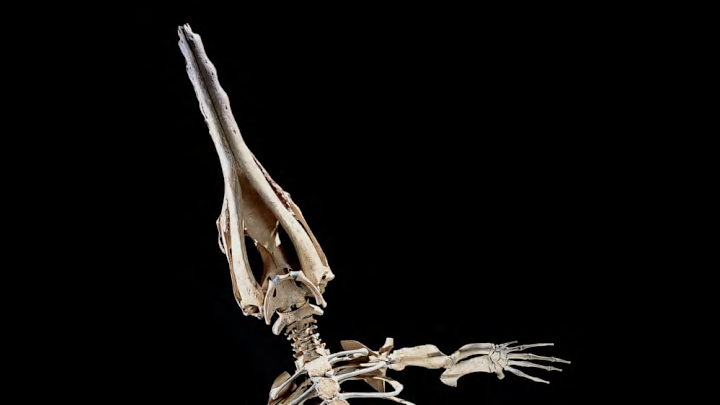A new book gathers 200 beautiful images showing evolution’s influence on the flora and fauna of the world.
If you look in the right places, evidence of evolution is all around us. You don’t have to be a DNA researcher or a paleontologist to see it, either. For more than a decade, photographer Robert Clark has been shooting images that explore the fruits of evolution. His new book, Evolution: a Visual Record, collects all those photographs in one volume for the first time, showcasing 200 images of fossils, plants, and animals that illustrate how the world has changed. Below is just a small sample.
1. A WHALE WITH LEGS

A skeleton of a prehistoric whale. Note the legs at the bottom of the photo.
2. LICHEN, NORTHERN CANADA

The earliest lichens showed up at least 4 million years ago, but the fossil record is far from complete. Lichens are actually composites of fungus and algae or cyanobacterium, so how exactly they should be classified is still debated.
3. CASUARIUS CASUARIUS

Birds are, in fact, living dinosaurs, though in the common imagination, dinos tend to look a little more reptilian than flighty. (Turns out, most had feathers.) But it’s pretty easy to see the family resemblance in the case of the southern cassowary, one of the largest and heaviest birds in the world. Native to Australia and New Guinea, they can be up to five feet tall and weigh more than 100 pounds.
4. ALEVIN SPAWNED FROM SALMON

Salmon survive across generations by sheer force of numbers. A female salmon can lay up to 35,000 eggs at once, but she dies soon after.
5. ANGRAECUM SESQUIPEDALE

The shape of Darwin’s orchid, native to Madagascar, caused the famous naturalist to hypothesize that the plant had to be pollinated by a moth with a proboscis much longer than had ever been seen before in the world, much less on the island. His contemporaries laughed at the notion, but after his death, collectors found Xanthopan morganii—a moth that proved Darwin right.
6. JELLYFISH

Jellyfish might have evolved as far back as 700 million years ago, though soft-bodied jellies aren’t abundant in the fossil record. Though their bodies may look simplistic, scientists think they were the first animals to possess organs, and may have also been the first to actively swim through water instead of floating along.
7. PHYLLIIDAE FAMILY

Insects like the “walking leaf” exemplify the protective results of natural selection. Leaf insects mimic plants in both color and shape to allow them to hide out from predators on branches or in piles of leaves.
8. CROCODYLUS POROSUS

Crocodiles are evolution's version of "if it ain't broke, don't fix it." They haven’t changed much since the Late Cretaceous Period. This five-toed foot belongs to the saltwater crocodile Crocodylus porosus.

The naked mole rat is one of two mammals on earth that live in colonies, just like ants or bees. Being eusocial means there’s only one queen in each colony who reproduces. Naked mole rats are also notable for a genetic mutation that results in their bodies producing a sugar that stops tumors from growing, leading to long lives—they can live up to 30 years.

